Don't wanna be here? Send us removal request.
Text
Leading Broiler & Layer Poultry Equipment Manufacturer in India
Gartech, a leading poultry farm company in India, specializes in advanced broiler and layer poultry equipment. We provide durable and efficient poultry cage systems designed to enhance productivity and bird welfare across commercial poultry farms.
0 notes
Text
Trusted Poultry Breeder Cage Manufacturer | Gartech India
Discover high-quality poultry breeder cages by Gartech, engineered for efficiency, bird comfort, and long-term durability. Trusted by poultry breeders and farmers across India.
0 notes
Text
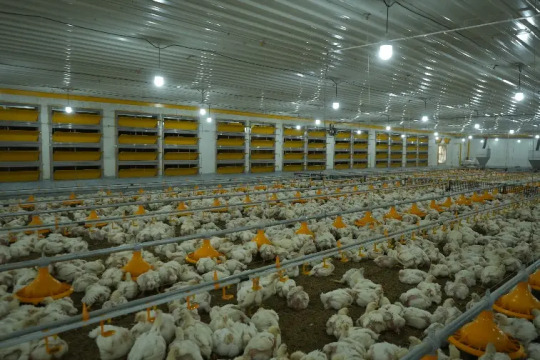
0 notes
Text
Vertical Broiler Farming with Insulated Shed | Smart Poultry Farm Design
Vertical Broiler Farming with Insulated Building | Polutay Farm | Smart Poultry Shed Design
Welcome to Polutay Farm, where technology meets poultry! In this video, we showcase our vertical broiler farming system constructed inside a well-insulated poultry shed designed for maximum efficiency, biosecurity, and cost savings.
Our multi-level poultry farming setup is engineered to optimize space while maintaining ideal conditions for broiler chickens. The insulated building helps maintain consistent temperatures in all seasons – reducing energy costs and improving bird health and growth rates.
🔧 Key Features Covered:
Vertical (multi-tier) broiler farming system
Temperature-controlled insulated building
Energy-efficient ventilation system
Hygienic and easy-to-clean design
Space-saving layout for high-density farming
This smart poultry infrastructure is perfect for commercial poultry businesses aiming to increase production, reduce mortality, and boost profits. Whether you're starting a new poultry venture or upgrading your current facility, this video will give you the insights you need.
📞 For product inquiries, site visits, or custom poultry solutions, contact us:
🌐 [https://www.gartech.co.in/] 📧 [[email protected]] 📱 [91 7447798692]
#VerticalBroilerFarming#InsulatedPoultryShed#PolutayFarm#ModernPoultryFarming#PoultryTechnology#BroilerFarmDesign#SmartFarmingIndia#PoultryBusiness
0 notes
Text
Top 5 Critical Mistakes to Avoid When Investing in Poultry Farm Automation
In today's dynamic landscape, embracing smart poultry farming is a strategic imperative for higher efficiency, lower operational costs, and unparalleled flock health. Accordingly, automation is emerging as a key enabler of sustainable growth and competitiveness across India's rapidly transforming poultry sector.
However, the path to smart poultry farm automation isn't challenging. Mistakes are one of them. These can result in financial setbacks, operational inefficiencies, and missed opportunities for optimize flock performance. But not when you implement automation correctly. So, let's see the top 5 mistakes while investing in poultry farm automation systems.
Top 5 Mistakes in Poultry Farm Automation
Here are five common pitfalls to avoid while embracing poultry equipment automation.
Mistake 1: Ignoring Proper Shed Design and Capacity Planning
Neglecting the basic principles of shed design and capacity planning is a costly poultry farm automation mistake. Many farmers fail to understand the relationship of the physical structure of their poultry house and the efficiency of advanced systems. This leads to hasty conversion of the existing traditional sheds, or constructing new ones without considering;
Optimal Bird Density: Overlooking the recommended space per bird, leading to overcrowding.
Housing Type Compatibility: Failing to choose between deep litter, cage systems, or environmentally controlled (EC) houses based on long-term automation goals.
Internal Layout for Automation Flow: Designing a layout that hinders the smooth operation of automated feeders, drinkers, egg collection systems, or manure removal.
Scalability: Building a shed that fails to scale or cannot be upgraded technologically.
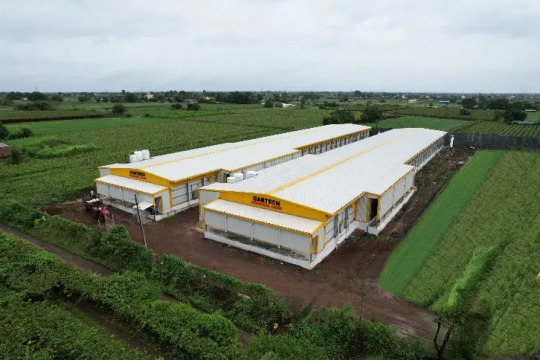
The Impact:
Poor shed design can affect poultry automation investment returns.
Overcrowding can reduce feed conversion ratios, decelerate growth rates, and increase susceptibility to diseases and increased mortality.
Automated feeding lines may not distribute feed evenly and can cause frequent maintenance.
Nipple Drinkers may not distribute water properly because of uneven pressure and may also cause leakages due to uneven pressure.
Climate control systems will struggle to maintain uniform conditions resulting in inefficient performance.
A shed incompatible with automation can lead to costly repairs, disruptive structural changes, increasing operational costs and delaying operational preparedness.
A poorly planned shed limits your ability to scale up production or introduce new technologies, confining you to a suboptimal operational space.
The Solution: Here's how you can deal with these challenges with a holistic approach.
Adherence to Best Practices: Follow breed-specific management guides from commercial poultry breeding companies for accurate housing density. These guides are tailored to each breed's genetic potential and provide precise standards for space, feeders, drinkers, and environmental conditions-ensuring compliance with global best practices and optimizing bird health, welfare, and productivity.
Embracing Environment-Controlled (EC) Housing: For optimal poultry farm automation, EC houses offer control over temperature, humidity, light, and ventilation. This stable environment minimizes stress, maximizes feed efficiency, and ensures consistent bird performance.
Optimizing Workflow Layout: Design the internal layout for seamless flow. Consider the path for feed delivery, automated feed lines, water lines, egg collection belts (for layers), manure removal systems, and easy access for maintenance and bird management.
Scalability and Flexibility: Consider constructing easily expandable and technologically adaptable sheds.
Mistake 2: Prioritizing Low Price Over Quality Poultry Equipment
While adopting automated poultry farming systems, farmers usually opt for the cheapest available poultry equipment to upfront costs. But it is a classic "false economy" that can lead to higher long-term expenses and crucial operational hassle.
The Impact: The consequences of choosing substandard poultry equipment extend far beyond simple mechanical failures:
Cheap equipment can result in frequent breakdowns, hampering productivity, increasing labor costs for repairs and potential disruption to feeding and watering.
Substandard quality materials and construction lead to faster wear and tear, requiring more frequent maintenance and premature component or system replacements.
Uneven feed distribution from faulty feeders, inadequate water supply from leaking drinkers, or fluctuating temperatures from unreliable brooders impact bird uniformity, growth rates, and flock health.
Substandard materials or designs can complicate equipment cleaning and sanitization, creating a breeding ground for pathogens and compromising biosecurity.
The Solution: Smart investors understand that poultry equipment is a strategic asset. The focus should be on long-term value, not just the initial price tag.
Accordingly, you must prioritize,
Robust Construction and Materials: Choose equipment comprising corrosion-resistant materials (e.g., superior galvanized steel, UV-stabilized plastics).
Reputation and Track Record: Choose manufacturers that deliver reliable, high-performance poultry automation solutions. Research their customer feedback, service network, and product warranties.
Energy Efficiency: Premium equipment often incorporates energy-efficient designs that save energy, and lower electricity bills.
Ease of Maintenance and Availability of Spares: Select systems with an easy cleaning and routine maintenance. Ensure spare parts are available and affordable, minimizing downtime when you need repairs.
Mistake 3: Improper Ventilation System Planning
Installing ventilation systems - fans, cooling pads, and control panels, haphazardly without assessing specific airflow requirements, shed volume, bird density, and the prevailing local climate is another common mistake. Merely adding a few fans or pads based on assumptions could cause creation of heat zones, result in uneven temperature distribution, and cause accumulation of toxic gases like ammonia and CO2.
The Impact:
Suboptimal ventilation systems create a hostile environment with dire consequences.
Inadequate air exchange, particularly in hot and humid climates, leads to heat stress, panting, reduced feed intake, and increased vulnerability to respiratory diseases.
Poultry litter generates ammonia. Without proper ventilation, ammonia concentrations rise, irritating the birds' eyes and respiratory tracts, damaging their immune systems, and impairing growth.
Poor ventilation traps moisture, leading to wet litter, promoting the growth of harmful bacteria and fungi, exacerbating footpad lesions and breast blisters.
Stressed, uncomfortable birds eat less efficiently and are more prone to illness, impacting feed conversion ratios and leading to higher mortality rates.
The Solution: Installing effective ventilation systems require precise calculations and strategic implementation:
Comprehensive Airflow Calculations: Determine adequate quantum and speed of air required for your specific flock size based on bird age, and volume of the house. This needs to account for peak requirements during hot periods.
Tailored System Design: Choose the right ventilation strategy - tunnel ventilation for larger, longer sheds, cross-ventilation for specific configurations, or natural ventilation with supplemental fans - based on your shed design, local wind patterns, and climate.
Strategic Fan and Inlet Placement: Place fans and air inlets to create a uniform airflow across the entire shed, eliminating dead zones and ensuring fresh air.
Smart Control Systems: Implement automated controllers that monitor internal temperature, humidity, and even CO2/ammonia levels, adjusting fan speeds, cooling pads, and inlets in real-time for optimal environmental conditions. Co2 and ammonia sensors are recommended for colder climates.
Evaporative Cooling Pads: For hot climates, evaporative cooling pads are complements to fan systems, reducing internal temperatures by drawing in air via water-saturated media.
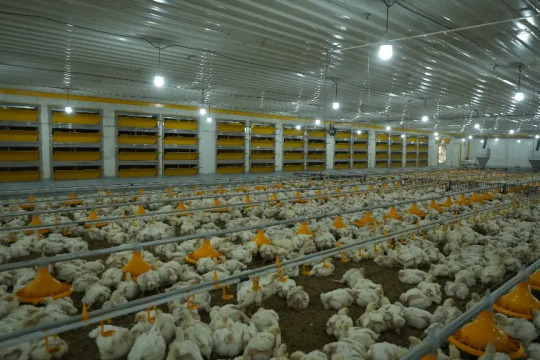
The ventilation system will run at its utmost efficiency when the building is properly insulated. Thus, the specific insulation R -value has to be followed while constructing buildings.
Mistake 4: Neglecting Backup for Power, Water, and Fuel
In an automated poultry farm system, systems like feeding, watering, ventilation, and lighting are dependent on a continuous and reliable supply of utilities. Many investors fail to plan for and implement backup systems for electricity, water, and fuel. Amidst power fluctuations and water scarcity, assuming constant availability of these resources can be disastrous.
The Impact: The absence of reliable backup utilities can lead to catastrophic losses, often within a short timeframe. Potential impacts can include;
In an automated EC house, Unreliable or insufficient power backup during a power failure can cause the ventilation system to work inefficiently, which could cause suffocation and extreme heat stress to the flock. (due to lack of ventilation)
Automated equipment like feeding system, egg collection, manure removal, silo etc will stop working, water lines dry up due to inadequate water storage, and climate control grinds to a halt, damaging sensitive electronic components, and resulting in critical repair or replacement costs.
Beyond the immediate bird mortality, damages can include disrupted production cycles, lost revenue from missed market windows, and stock replacement costs.
Such incidents can impact your farm's reputation and buyer relationships.
The Solution: Building redundancy into your farm's utility infrastructure is non-negotiable for poultry farm automation. Proactive planning involves:
Robust Backup Power Generation: Invest in a generator with sufficient capacity (kW) to power essential automated systems simultaneously. Ensure it has an automatic transfer switch (ATS) for seamless, instant transition during grid failures.
Ample Water Storage: Install large-capacity water storage tanks (overhead and ground level) capable of sustaining your flock for at least 24-48 hours, factoring in drinking, cooling, and cleaning needs. Explore multiple water sources if feasible.
Adequate Fuel Reserves: Maintain sufficient fuel on-site to run your backup systems for an extended period, especially during times of unpredictable supply.
Regular Maintenance and Testing: Implement a strict schedule for generator maintenance and weekly load testing to ensure it functions properly. Additionally, check water levels and fuel gauges regularly.
Mistake 5: Overlooking Training, Biosecurity and Digital Record keeping
Even the most technologically advanced poultry farm automation system is only as effective as the people who operate and manage it. Some common mistakes can include;
Neglecting Staff Training: Assuming operators will instinctively know how to handle complex automated poultry equipment or respond to system alerts.
Lax Biosecurity Protocols: Believing that automation reduces the need for stringent biosecurity, or not enforcing protocols strictly.
Ignoring Digital Record-Keeping: Failing to utilize the data generated by automated systems or relying on outdated manual record-keeping.
The Impact: These oversights can significantly negate the benefits of poultry farm automation:
Untrained staff might use incorrect settings, misinterpret data, or fail to perform routine maintenance, affect operations, bird performance and lead to costly equipment damage.
Lapses in hygiene, visitor control, or waste management can introduce pathogens that spread rapidly in high-density automated sheds, causing disease outbreaks and financial damages.
Without consistent, accurate digital record-keeping of various operational aspects, you lack the data to analyze performance trends, identify inefficiencies, predict problems, or make informed management decisions to optimize profitability.
Without proper training and detailed records, diagnosing and resolving issues with automated systems becomes a time-consuming and frustrating ordeal.
The Solution: To unlock the power of poultry farm automation, invest in your human capital and establish robust protocols: Some measures include;
Comprehensive Staff Training: Train all operators on the specific automated poultry equipment installed. Cover daily operations, routine maintenance, troubleshooting common issues, understanding system alerts, and emergency procedures.
Ironclad Biosecurity Protocols: Implement and enforce a multi-layered biosecurity plan, including strict entry/exit procedures, sanitization stations, controlled visitor access, appropriate disposal of dead birds and waste, and correct zone management.
Embrace Digital Record-Keeping & Analytics: Use the integrated data collection capabilities of modern poultry automation systems. Implement farm management software or digital dashboards to track key performance indicators (KPIs) in real-time.
Want to Avoid Mistakes?
Then connect with Gartech. We specialize comprehensive poultry farm automation solutions, ensuring you avoid these critical mistakes and optimize the potential of automation in your context. Email us at [email protected] and allow our experts to understand your requirements
0 notes
Text
Discover the GE Ultima Air Wide:
A Compliance Champion for Indian Govt and EU Council Directive 1999/74/EC
Introducing Gartech's GE Ultima Air Wide, a revolutionary nest box that not only meets the regulations set by the Indian Government i.e. minimum 6 to 8 birds per box and 550 Square CM per bird but also goes above and beyond to adhere to the animal welfare norms proposed in the European Union Council Directive 1999/74/EC, emphasizing the importance of providing a minimum box height of 45 cm (17.72").
Unparalleled Spaciousness:
With the GE Ultima Air Wide, we prioritize the comfort and well-being of the birds. Our nest box offers ample space, ensuring easy movement inside the box for your feathered friends. This unrestricted space also grants them convenient access to feed and water, creating a stress-free and conducive environment.
Elevating Cross Ventilation:
Recognizing the significance of (“adequate” or “plenty of” would be more appropriate) airflow, our nest box offers (or similar) an excessive height that significantly enhances cross ventilation. By facilitating ample of fresh air, your birds can breathe freely, promoting better respiratory health and overall vitality.
Safer Growth and Injury Prevention:
The GE Ultima Air Wide takes bird welfare to heart. Its increased height effectively eliminates issues associated with bird growth and prevents injuries to their combs and tails caused by obstacles during movement. Your birds can now move with ease and grace, free from any unnecessary harm.
Experience Unmatched Compliance and Welfare:
Gartech's GE Ultima Air Wide stands as a testament to our commitment to exceeding regulatory standards and promoting animal welfare. Complying with Indian Government regulations and embracing the European Union Council Directive 1999/74/EC's recommendations on box height, our nest box provides the ideal environment for your birds to thrive, ensuring their happiness and productivity.
0 notes
Text
The Ideal Broiler Farm Setup: Best Practices for Poultry Success
Welcome to this comprehensive video guide on building the ideal broiler farm. Whether you're just starting out or already involved in poultry farming, this video highlights the key factors—such as housing, feeding, and management—needed to establish a productive and efficient broiler farming operation.
0 notes
Text
Layer Poultry Farming Guide: Start Your Egg Business Today - Gartech
Learn how to start and manage a successful layer poultry farming business with our step-by-step guide. From selecting breeds and building poultry sheds to feeding, disease control, and maximizing egg production, this comprehensive resource helps beginners and professionals boost productivity and profitability.
0 notes
Text
The Ideal Broiler Farm Setup: Best Practices for Poultry Success

0 notes
Text
State-of-the-Art Breeder Farm: Pre-Engineered with Battery Cages and Automatic Manure Removal System
Gartech Equipments is proud to present its Broiler Breeder project, offering a turnkey solution that includes a pre-engineered building with robust galvanized structures, PIR panels for superior insulation and fire resistance, along with a Turbo Tunnel Ventilation System and an automated manure removal system
0 notes
Text

Introducing Gartech's Omnicon R20 Climate Controller
Experience unmatched precision and reliability with Gartech's Omnicon R20 climate controller, an advanced solution featuring 20 output relays designed specifically for poultry applications. This state-of-the-art climate controller offers a sophisticated touchscreen display with a user-friendly icon-based menu, ensuring seamless navigation and intuitive control.
Tailored to Modern Poultry Houses:
The Omnicon R20 is expertly engineered to cater to modern poultry houses equipped with turbo tunnel ventilation systems. Its versatility shines through with the capability to operate in nine distinct stages, including Minimum Ventilation (with heater), Cross Ventilation, Tunnel Ventilation, Turbo Tunnel Ventilation, Air Inlet, Cooling Curtain, Cooling, Light, Feed, and Water.
Key Features that Set Omnicon R20 Apart:
Remote Control Access through Mobile or Desktop: The Omnicon controller screen can be remotely accessed through a Mobile device (application) or Desktop computer using internet.
Smart Airflow Management:
During Minimum Ventilation, the Omnicon intelligently runs fans within specific groups to maintain uniform airflow throughout the poultry house, ensuring optimal ventilation.
Humidity Control
The Omnicon is designed to handle high-humidity climates with perfection. It automatically deactivates cooling, once the desired humidity level is reached, while triggering additional fans when relative humidity surpasses the set point.
Comprehensive Data Visualization at your fingertips
Experience convenience with the Omnicon's ability to present the entire flock's growth data in both tabular and graphical formats on its live color screen, providing valuable insights within a few taps.
0 notes
Text
How to Start a Profitable Broiler Poultry Farm: A Step-by-Step Guide
Ever wondered if your hard work, dedication, and commitment hatch into something truly gratifying? Then, welcome to the world of broiler farming - your golden egg when it comes to revenue, profits, and above all, satisfaction! But hold on! Running a broiler poultry farm demands extensive planning and executing your plan appropriately. It is surely challenging but equally exciting. This step-by-step broiler poultry farming guide can help you carve your own roadmap to success. Prepared to hit the road? Let's get going then!
What is Broiler Poultry Farming?
Broiler chicken farming means raising chickens for meat. It involves breeding chicks for rapid and efficient growth. They are raised in large, buildings termed Poultry houses/Barns. The aim is to raise healthy birds from day-old chicks to market weight quickly. The processing usually happens in about 5 to 6 weeks of age. Now that you know what broiler farming is, let's look at how to start it.
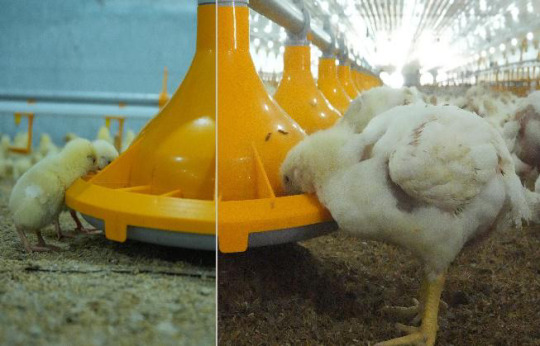
Step Guide to Start Broiler Poultry Farming in India
Knowing how to begin a broiler chicken farm business was never so easy! This 9-step guide can help you get started with your broiler chicken farming business.
Research
The poultry business is complex, competitive, and demanding. So, before you begin investing money, research the industry.Start by understanding the market demand, potential challenges, and key success factors. Contract farming for large Integration companies is a stable and sustainable approach but sometimes with marginal profits. Consider studying the successful broiler businesses in your region, speaking with experienced farmers, visiting them, and comprehending local regulations. It will help you know the territory you are entering, prepare for it better, and thrive.

Prepare a Business Plan
A solid and thoughtful business plan lays the foundation for a successful venture. Accordingly, it must include every aspect, including the following.
Potential Poultry House locations
Business mission and goals
Estimated initial costs
Funding alternatives (investors, financial institutes, self, friends, and family)
A breakdown of operating expenses
Marketing and sales strategies
Risk assessment strategies
Select the Right Location
Location plays an instrumental role in driving the success of your broiler Murgi/ Poultry farm. Unlike other businesses that need a prime location in the heart of the city, poultry farms are usually located away from the city or sparsely residential regions. Nevertheless, while selecting a location, you must ensure,
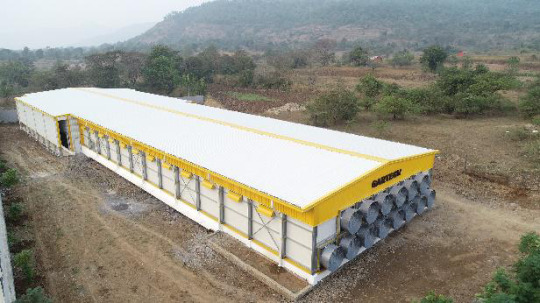
Accessibility for easy, convenient, and economical transportation
Leveled, clean, open and ventilated land.
Where summers are hot (Tropical or temperate climate) it is advisable to build Poultry houses in east / west direction. i.e during summer the sun should travel along the roof line of Poultry House. This will help minimize heat transfer in building ensuring cooler environment in Poultry House. Hence ensure east to west side of the land is minimum 25 meters plus the proposed length of the Poultry House.
If the summers are hot, it is advisable to locate the farm where the climate is dry during summer. Evaporative cooling is the only economically viable system for Poultry Farming. The reduction in temperature is directly dependent on outside air humidity. Dryer the climate better the temperature reduction.
Access to clean water and a reliable and seamless electricity supply. (Present day Broiler farms are equipped with automated systems and need stable and continuous power supply)
Land should be elevated with proper rain/storm water drainage availability. Check the land history in terms of water logging/flooding of the proposed location.
Check for statutory permissions required if any.
Ensure there is sufficient space for expansion.
Create the Poultry Setup
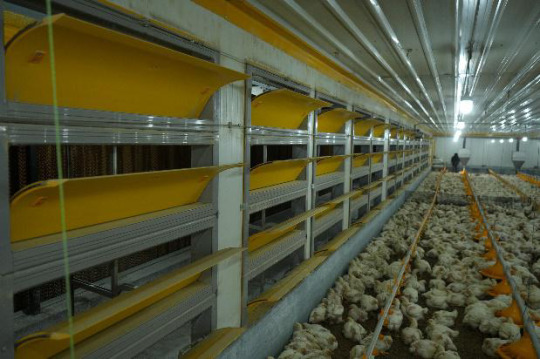
Broilers demand a comfortable, hygienic, well-ventilated and insulated setup to grow and stay healthy. Accordingly, your poultry setup must include,
Well-ventilated, Insulated, spacious, and predator-proof poultry house.
Proper heating systems for young chicks to stay warm and develop properly.
Heating capacity and building insulation should be calculated based on severe winter conditions in the proposed locality.
Heating source must be determined based on what is economical, environment friendly and easily available locally.
If feed is coming in bags, then an exclusive feed storage facility should be provided to keep it dry and fresh. Storage capacity should be calculated based on the quantum and frequency of feed delivery.
If feed is delivered in bulk truck, then ensure there is proper motorable road up to feed silo with sufficient space for the truck to turn around.
Silo Capacity is determined based on total housing capacity and the frequency of delivery. Silo should have sufficient empty capacity to accommodate a total bulk feed truck capacity or at least 1 or 2 compartment of big truck. This should be discussed and finalized with the feed supplier.
Feeding System should be selected diligently. Feed is biggest cost of your product "The Broiler" and major deciding factor of your profitability. The system must work 24/7 for many years to come. Hence should be purchased from reliable reputed company that can provide after sales service and spares for many years to come. Design and quality of feed Pan is of paramount importance. The Pan should be easy to Clean with minimum components. More components mean more work during cleaning, operating and expensive for maintenance. Select Feed Pan which enables chicks to eat from it easily from day one. This is very important as providing additional supplementary feeders for first few days is very cumbersome and labor intensive. Avoid using Pans that need feed level adjustments for different age groups. This is also very time consuming, labours and can cause feed wastage if done incorrectly.
Water is most critical input but unfortunately is also the most neglected. Ensure availability of Ample clean water while selecting Land. Total Chemical and Bacteriological analysis of water should be done and a suitable water treatment Plant must be installed.
Watering system: Nipple drinking system is most widely used and recommended. Side action or 360deg type nipples should be used in broiler rearing. In warm weather it is recommended to use high flow nipples with drip cups. Frequent Flushing of nipple system is highly recommended. The Nipple drinking system should be well equipped easy flushing arrangement. Water pressure is most crucial aspect in functioning of correct nipple system alongside the flushing system. The incoming water pressure should be above 1 bar. 1 kg/cm2) 14 PS1. It is advisable to install a pressure pump for the incoming water.
Fans play a crucial role in maintaining proper ventilation in the Poultry House. For a tunnel ventilation system, it is necessary to maintain velocity up to 3.5meters/sec. (700 ft/min) during summer. To achieve this velocity, selection of right fan is very important. Until recent past 50 inches (diameter) box fans were popularly used. However, these 6 blade fans are cheap but not power efficient for required high capacities of Modern-Day Poultry Farm. They have limitations of capacity when it comes to achieving required high air velocity. Today Larger Diameter Cone Fans (54-inch diameter) are used in Modern Day Poultry Farm to achieve the demanding high air velocity. These fans are power efficient and have higher throughput capacity. Higher Capacity mean almost 30% to 40% lessor number of fans to achieve required air velocity. High efficiency fans have 3 to 4 aerodynamically designed blades that can run at demanding low and high RPM.
Cooling Pads: Ensure the area of cooling pads is in commensurate with the capacity of incoming air. For efficient cooling the pads should be kept clean of dust and scale. As a standard practice 25% recycled water should bleed off to avoid scaling. However, this will depend upon the quality of incoming water. Higher the Hardness and TDS more the bleeding.
Heating System: There are many types of heating systems available in the market. Primarily they can be classified as Infrared heaters, Space (Air) heaters Embedded Radiant Heater. In Broiler farming heating is required for every cycle hence should be integral part of the entire system. Selection of heating system should be based on economically and easily available energy source. Energy means cost and to conserve this expensive energy cost it is imparitive to have a properly insulated airtight Poultry House. Else it like poring water in a leaking utensil. Heating system has to be well connected withController, air inlets and minimum ventilation fans to achieve perfect brooding condition without eye watering ammonia, carbon dioxide and other toxic gases.
Poultry House: Today the most neglected aspect in Broiler Farming is the building itself. This building which houses your profit-making birds, and all required expensive equipment. Let,s understand why this is so crucial. Only a healthy flock and a greater number of cycles (harvest) per annum determines the profitability of Broiler Farming. This is possible only if the building is disinfected and cleaned thoroughly before inducting the next flock. Any residual sub clinical infection can cause severe problems affecting flock performance. For this the entire inner surface of the building (walls and ceiling) should be smooth and easily washable. Insulated wall Panels offer such smooth washable clean surface. Further these panels with required R value are excellent for insulation. A well-insulated airtight Poultry House will ensure perfect brooding condition and at the same time it will be a perfect solution for maintaining cooler temperature during Hot summers.
Ventilation and Controllers: The required ventilation in the building can change multiple times every hour and that to base on different seasons, time of the day, age of the bird etc. The controller is brain of the system to understand and control the ever-changing ventilation parameters. In tandem with Big Fans, Minimum Ventilation Fans, Air inlets, Tunnel inlets, Heating and cooling system, lighting system the controller achieves most comfortable and growth promoting healthy environment in the Poultry house. In addition to monitoring systems the controller should be able to collect real time data like, temperature, humidity, Air pressure, ventilation rate, water and feed consumption in addition to controlling many other equipment like Silo etc. The controller should analyze this real-time data and activate necessary on farm Alarms and online alerts. Remote access and control via internet (Phone/Computer) is must.
( Always consult a specialist while building a Broiler Farm)
Procure Quality Chicks
Quality is the cornerstone of the poultry business and your success as a poultry farmer. Hence, you must buy chicks only from reputed hatcheries. While buying them, you must ensure the chicks you buy are properly vaccinated, healthy, and exhibit a good growth rate. Poor-quality chicks might save you some money. But they will be more susceptible to diseases, high mortality rates, and consequently, financial losses for you.
Buy the Necessary Poultry Farm Equipment
Next, buy the equipment you need for your broiler poultry farm. It includes housing - broiler chicken cages, feeders, watering systems, water filters, pressure tanks, temperature control systems, and lighting systems. You will also have to set up a waste management system to manage waste and keep the poultry healthy, hygienic, and conducive for chicks to grow.
Set Biosecurity Rules and Regulations
Disease outbreaks can inflict diseases on birds, letting all your hard work, and investment down the drain. Prevention helps and lets you go a long way. Here are some preventive measures or biosecurity rules and regulations you must implement.
Keep visitors to a minimum
Disinfect your equipment and farm regularly
Ensure regular vaccination of your birds
Monitor illness signs and act immediately
Control pests and rodents to prevent the spread of diseases
Broiler farming is about meat. Thus, you must regularly check the weight and health of your birds. However, while doing that, you must also maintain detailed records of their daily feed consumption, growth rate, mortality rate, and vaccination schedules. This is part of broiler farming poultry best practices that help you identify issues early, optimize farming productivity, and maintain profitability.
Weave a Network and Market Your Business
Broiler chicken is in demand everywhere. However, you must remember that the market also has many other players already serving broiler lovers for years! Networking and marketing are keys to the success of your broiler poultry farm. So, you must build a network of broiler dealers and meat processing companies across your region, establish relations, and attempt to become their regular supplier.
Some strategies to consider include direct local market selling (including restaurants, supermarkets, hotels, etc.), partnering with meat processing companies for bulk supply, online selling through social media, and gate sales.
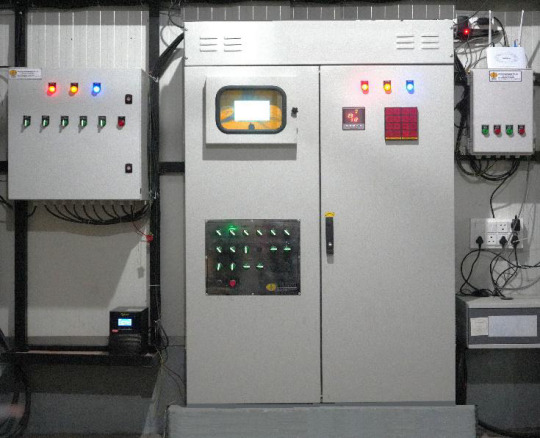
Gartech Equipments - Helping Broiler Poultry Farming Flourish!
We hope the above guide helps you start a broiler poultry farming business. However, our role extends to providing broiler poultry farming equipment as well. We are one of the leading poultry equipment suppliers with a global clientele and trust.
Our product range includes everything from broiler chicken cages to nipple drinking systems, pan feeding systems, and much more.
These products integrate the latest technologies, enabling poultry farmers to increase productivity, maintain a healthy environment, and drive more profits. Our support includes everything from equipment setup to maintenance and ensuring regular updates to help you keep up with the evolution in broiler farming.
So, are you ready to take the plunge? If so, we are here to help you. Email us at [email protected] to connect with our experts and discuss your needs.
0 notes
Text
High-Quality Battery Cages for Poultry – Gartech | Durable & Affordable Solutions
Discover high-quality battery cages for poultry that ensure optimal space, comfort, and productivity for your birds. Our cages are designed with durable materials to withstand long-term use and enhance egg production. Ideal for both small and large-scale poultry farms, they offer easy maintenance and efficient management. Choose the perfect solution to boost your poultry farming operations today.
0 notes
Text
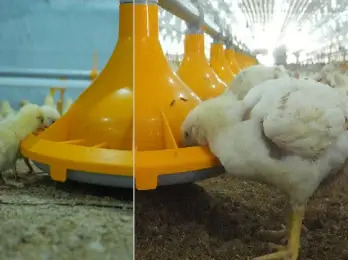
brpoultry farmin
0 notes
Text
Poultry Farm Equipment Manufacturers In India - Gartech Equipments
Gartech is a leading poultry equipment manufacturer in India, providing high-quality poultry farm equipment for efficient farming. Our innovative solutions ensure better productivity and durability for your poultry operations. From automated feeding systems to climate control, we offer a complete range of poultry farm equipment. Contact us today for the best poultry solutions!
0 notes
Text
How to Choose the Right Equipment for Your Poultry Farm?
Then choosing the right poultry farming equipment matters. However, amidst the maze of options, making the right choice can be challenging. So, if you've been riddled with them, Gartech helps you select the right setup.
Selecting the Right Poultry Farm Equipment - 7 Factors to Consider
The quality of equipment, its features, functionalities, etc., can make or break your poultry efficiency and consequently, success. Choosing the right poultry farming equipment involves considering the capabilities and offerings vis-Ã -vis your needs. Accordingly, you must consider these seven factors.
1.Poultry Farm Goals and Objectives
Your poultry goals and objectives are at the core of everything. Thus, you must consider them before reviewing equipment. It involves considering the poultry production you wish to do - whether meat production, egg production, or both. Besides, factors like the number of birds and the housing system also matter when assessing the purpose of poultry farming. Additionally, you must consider the scale of operations. However, we will look at the point later in this post.
Additionally, the lack of insulation in many poultry houses contributes to excessive heat loss, making it harder to maintain a stable indoor environment. This not only increases heating requirements but also complicates ammonia management.
2.Farm Space and Layout
Next, calculate the available space and create a farm layout that helps you use your space optimally. Vital factors to consider in this context include utility access, the shape of the land plot, and the arrangement of poultry units. The more efficiently you use the space, the smoother your workflows. Apart from that, prudent use of the space helps ensure adequate ventilation and simplifies feeding and water access, while also enabling efficient maintenance.
3.Operational Scale
Another important consideration is the scale of operations - whether you want to run a small setup, a medium-sized shed, or a large-scale poultry farm. Why do this? This is because the equipment requirements of a small-scale poultry farm are different from those of a medium and large-scale farm. Considering your scale of operations will help you choose the equipment best suited to the number of birds you want to rear and the volume you expect to generate.
4.Essential Poultry Farming Equipment
Every poultry farm is different and so are its equipment needs. However, each commercial farm requires certain machinery to operate efficiently and serve the production purpose. These include the following.
Housing and Ventilation Systems
A well-ventilated poultry house has optimal air circulation, helping you prevent heat and respiratory diseases. You can choose between open or closed housing systems and select ventilation systems that include exhaust systems, fans, and cooling pads.Feeding Equipment
Feeding systems help reduce waste and enable uniform growth. Some options to consider include automatic feeders, manual feeders, and troughs or pan feeders.Watering Systems
Hydration is crucial for bird growth, health, and overall well-being. Accordingly, you can select from nipple drinkers, automated watering systems, or bell drinkers.Egg Collection and Nesting (Layer Poultry Farming)
If you are into layer farming, you must also invest in proper egg collection systems to minimize breakage and contamination. You can consider manual nest boxes (suitable for small farms) or automatic egg collection systems (apt for commercial poultry farming operations, reducing labor and ensuring clean eggs).Brooding and Heating Systems
Maintaining optimal temperature levels is critical for chicks. Some options you can look at in this context include infrared brooders, gas brooders, or electric heat lamps.Waste Management Systems
A clean farm is a healthy one. Dirty and unhygienic conditions can make your farm a breeding ground for germs, harmful bacteria, and diseases. Thus, you must have the right waste management systems to ensure your farm stays hygienic. You can choose from a couple of waste management approaches that include manual cleaning or automated scrapers or belt systems.
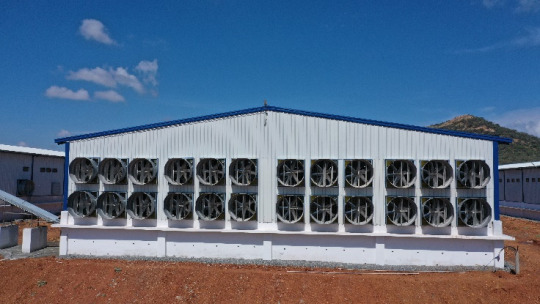
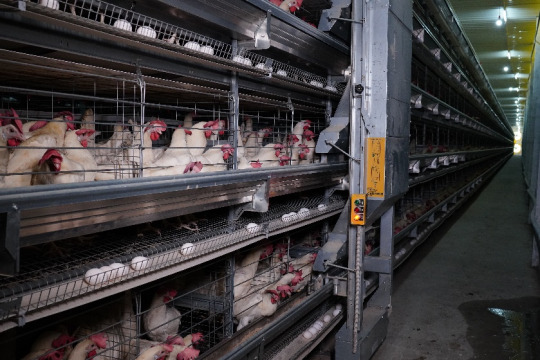
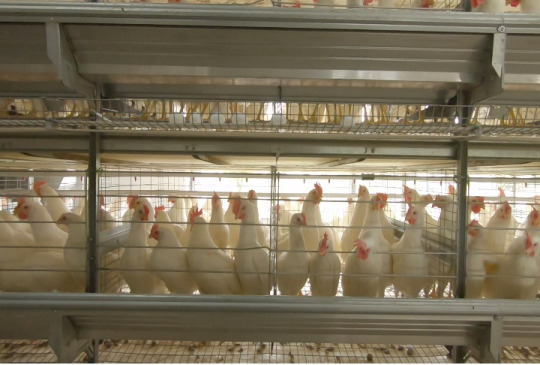
5.Durability and Quality
Egg and chicken poultry farming equipment involves a substantial investment. Poor equipment can lead to frequent breakdowns, repairs, etc., draining or delaying your profits. Thus, you must make a thoughtful choice, even if it takes a little longer. Look for experienced and reputed poultry farm equipment manufacturers in India. Equipment from such manufacturers is considered reliable and durable. Additionally, you must check for warranties and certifications ensuring the machinery's quality and compliance with the industry standards in your region. Gartech Equipments ensures reliability, durability, and quality and provides a range of equipment. Explore our offerings.
6.Technology Integration
Poultry production in India has been manual for years. But now, it is time to elevate industry standards. Automating operations and integrating technology are some ways of doing it. Automation streamlines processes, minimizes labor requirements, and enhances efficiency. Thus, you must look for equipment with automated egg collection systems, feeding systems, watering systems, climate control, data monitoring, and more.
7.Maintenance and After-Sales Support
Maintenance is integral to every piece of equipment. However, not every manufacturer provides or assures you of after-sales support like maintenance, repairs, upgrades, etc., in their package. Thus, before you purchase equipment, you must ensure your package includes maintenance and comprehensive after-sales assistance whenever needed. Reputed manufacturers like Gartech exemplify customer service with the end-to-end service they offer. It includes pre-sales consultation and post-sales support.
Prepared to Transform Your Poultry Farming Business?
Choose Gartech. We are poultry production and management experts who deal in different types of poultry farm equipment. Our range of products covers breeder, broiler, and layer farming. They include cages, battery cages, egg collection systems, automated feeders, nipple drinking systems, etc. However, we don't limit ourselves to products but extend our support to factors like technical assistance, maintenance, prompt upgrades, and regular updates. Gartech is the choice of millions of poultry farmers who continue to benefit from our equipment quality, customer-centric approach, and comprehensive support. Email us at [email protected] if you want to be next.
0 notes
Text
Discover the GE Ultima Rearing Battery Cage, designed for optimal poultry management. This high-quality system ensures efficient rearing with superior comfort, durability, and ease of maintenance. Perfect for modern poultry farms
0 notes